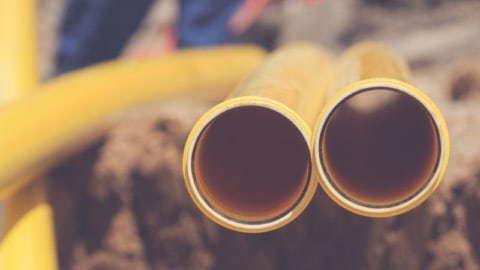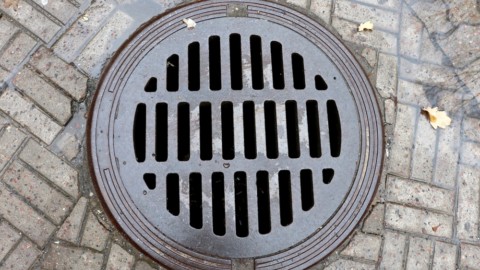By Andrew Chamberlin. Project Manager – Energy, Queensland Farmers’ Federation
Pumping and irrigation systems can account for a large proportion of farm energy use. Pumps are driven by electric or diesel motors to deliver water to the field for irrigating crops and stock, so operating them and the systems efficiently is important. Moving water is energy-intensive so effective irrigation will require less energy per unit of production: the energy water nexus.
Many irrigation systems have evolved with the farm over generations: the dependable pump and pipes may have lasted for several generations with changes in crops, block sizes and irrigation types.
The key is to ensure that a system continues to deliver the right amount of water at the right time and then supply it through the most efficient system.
The Spring 2021 Edition summarised the top eight ways to improve energy efficiency in pumps such as choosing a suitably sized pump, optimising piping, maintaining systems and using variable speed drives. This story illustrates those improvements with the results of some on-farm energy audits.
Queensland Energy Savers programs helping farmers
The Energy Savers programs have delivered over 300 energy assessments and audits in most agricultural sectors throughout Queensland, focusing on electric systems.
The most recent phase of the program, the Energy Savers Plus Program Extension (ESPPE) audits have identified annual savings of 7.5 million kWh, which would save an estimated $3 million and 6,000 tonnes of carbon emissions.
If farms implemented all recommendations in the audits they would reduce energy consumption by around 40 per cent in the areas monitored.
The most recent 180 audits included 670 recommendations with 270 relating to pumps and irrigation systems. Irrigation efficiency opportunities in energy audits have identified an average of 16 per cent reduction in energy consumption with cost savings of around 34 per cent on the systems audited.
The assessments have considered the water requirements and system configuration as well as the pump and motor. They include pipe upgrades, pump upgrades, pressure reduction and the addition of variable speed drives.
After implementation, some measurement and verification has been occurring and as well as quantifying actual savings, farmers have reported other benefits from irrigation upgrades such as improved crop consistency and time savings.

Energy Savers program in action
Bore pump upgrades for a Burnett fodder farm
In a Whole of Systems review(1) on Burnett fodder farm, the auditor identified that 15 per cent of energy use was due to static head caused by narrow pipe and a number of elbow fittings.
The auditor recommended upgrading 130 metres of 100mm PVC pipeline to 150mm PVC to reduce annual pumping energy by 17,429kWh and cut annual costs by over $4,500. Three bore pump upgrades were also recommended. The farm is going ahead with the upgrade to three bore pumps.
One of the bore pumps will be replaced with a new pump and motor of approximately the same size, but as a new, high efficiency model, will deliver an additional five litres of water per second, reducing the pumping hours by 20 per cent and energy consumption by 30 per cent.
Increasing motor efficiency for a Lockyer Valley fruit farm
A Lockyer Valley fruit farm(2) implemented all of their energy audit recommendations, which included lighting, refrigeration and irrigation.
The 15kW irrigation pump is used every day to irrigate a number of different sized blocks on an undulating farm. The energy auditor contacted the original pump installer who advised that there were different blocks and duty points on the farm when the pump was originally installed.
Although the pump has a variable speed drive, which was added some time ago, the assessment found the motor itself was worn and no longer suitable for the duty points.
The new motor will be the same capacity, but the new, efficient model is predicted to increase productivity by around 10-20 per cent because of the increased irrigation flow, with irrigation efficiency improving from 4.36kWh/ML/m to 3kWh/ML/m.
The farm has reduced annual costs by around $9,500 and will increase revenue due to the productivity improvement.
Improving energy efficiency at an Atherton Tablelands farm
An Atherton Tablelands farm(3) replaced a 55kW pump with a 45kW pump, adding a variable speed drive and moving the pump closer to the creek to reduce suction head.
The farm has a centre pivot and lateral irrigator which are both different sizes and operate on a sloping part of the farm so the variable speed drive allows the pump to operate near its best efficiency point for both irrigators.
A telemetry system has been installed so that the farmer can switch the pump remotely, saving a lot of trips to the pump at all hours of the day.
The farmer has also installed a 39kW Solar PV system with a 30kW inverter to power the pump. Measurement and Verification (M&V) has found that irrigation system efficiency improved from 400kWh/ML to 251kWh/ML with a resulting cost saving of $34.80 per megalitre pumped.
The lower electricity consumption, combined with the addition of a solar system, has reduced the farms consumption from 130MWh to 70MWh per year, meaning it will be classified as a small customer.
In conducting the M&V, the auditor found that the farm had not yet adapted to operating the irrigation mostly during the day when it could be powered by the solar and was still operating a larger period of time at night.
Accordingly, higher savings are anticipated from a change to daytime pumping. With these and some efficiency savings to the farm shed, the farm will reduce energy consumption by 46 per cent and reduce carbon emissions by 48 tonnes per annum.
Introducing VSDs to a Mackay cane farm
A Mackay cane farmer(4) is replacing three Star Delta Starters with variable speed drives on centrifugal pumps ranging in size from 30kW to 45kW. Star Delta Starters have been commonly installed to reduce start up current.
The pumps are being throttled to manage pressure to the irrigator as the pumps are oversized. The variable speed drives will manage the pressure efficiently by slowing the motor speed as well as reducing pressure to the irrigators without using valves.
The auditor also recommended a number of other initiatives including installing a 10kW solar pump. All of the above projects will save the farm over 52,000kWh and $13,200 per annum with an outlay of $22,100.
Centrifugal pump and VSDs provide energy saving opportunity for horticulture grower
A horticulture grower(5) has replaced a 30kW centrifugal pump with a new efficient model and a variable speed drive, as well as adding VSDs to an 11kW submersible bore pump and a 22kW centrifugal bore pump.
The grower is expected to reduce power consumption from 56kWh/tonne to 49kWh per tonne saving 42,000kWh and $21,600 per year as well as 34 tonnes of carbon emissions.
The pumping requirements vary because the pump supplies water to a number of different irrigation blocks with different irrigation systems including drippers and booms. The bore level varies as well, with levels currently very low.
On some blocks, the pressure is higher than required so it is managed by the grower by throttling with a valve at the discharge side of the pump.
This significantly increases the friction losses, and therefore the amount of energy consumed per megalitre of water. The auditor has based the recommended pump on the most uphill position of the irrigation system and recommended a variable speed drive so the pump speed can be reduced to provide the correct pressure to the lower blocks.
Product and time savings realised for Brisbane nursery
A Brisbane nursery(6) reported consistent product and time savings as two of the best outcomes of reducing the size of an irrigation pump as part of a group of efficiency projects which included hot water and lighting efficiency.
The pump was reduced from 7.5kW to a variable speed 5.5kW, giving the nursery consistent water and pressure over different sized blocks.
The nursery invested $12,000 to save $12,000 per year, reducing its power consumption from 130,000kWh to 73,000kWh per year, bringing them under the threshold for a large user and reducing carbon emissions by 28 tonnes.
Solar PV helps to reduce pumping costs
140 solar systems were recommended in the energy audits ranging in size from 5kW to 100kW, with 30kW the most common size; it is the largest inverter size that can connect to the electricity distribution network as a micro-embedded generator in Queensland.
With some of their power provided by solar systems, farms have been able to reduce the consumption of grid energy for pumping and also adjust their irrigation strategy to irrigate during the day using solar power rather than in the evenings on lower tariffs.
VSDs reduce power consumption on Gatton horticulture farm
A Gatton horticulture farm(7) is on track to reduce power consumption by 42 per cent by adding variable speed drives to nine submersible bore pumps under 7.5kW to allow for variable aquifer levels; and replacing two 7.5kW pumps with 5.5kW models with variable speed drives.
The audit also recommended installing a soil moisture monitoring system to help manage irrigation scheduling as well as a 15kW solar PV system which are yet to be implemented.
The average payback on all of the recommended projects is three years and the annual energy savings are estimated at 141,000kWh per year, reducing power consumption from 30kWh/tonne to 17kWh/ tonne and reducing carbon emissions by 114 tonnes per year.
Looking to the future of energy savings
Queensland Farmers’ Federation is working with industry partners on a number of other exciting energy transition projects including microgrids in agriculture and digital agriculture.
See the agricultural energy efficiency case studies here and click here to subscribe to the QFF bi-monthly energy e-news.
Please contact the team at [email protected].
The Energy Savers Plus Extension Program is delivered by the Queensland Farmers Federation with support and funding from the Queensland Department of Energy and Public Works.
References
(1) https://www.qff.org.au/newsroom/case-studies/mondure-irrigation-farm/
(2) https://www.qff.org.au/newsroom/case-studies/gatton-fruit-farm/
(3) https://www.qff.org.au/newsroom/case-studies/mareeba-irrigation-farm-2/
(4) https://www.qff.org.au/newsroom/case-studies/mackay-sugar-cane-farm/
(5) https://www.qff.org.au/newsroom/case-studies/laidley-horticulture-farm/
(6) https://www.qff.org.au/newsroom/case-studies/aspley-nursery/
(7) https://www.qff.org.au/newsroom/case-studies/gatton-horticulture-farm/















